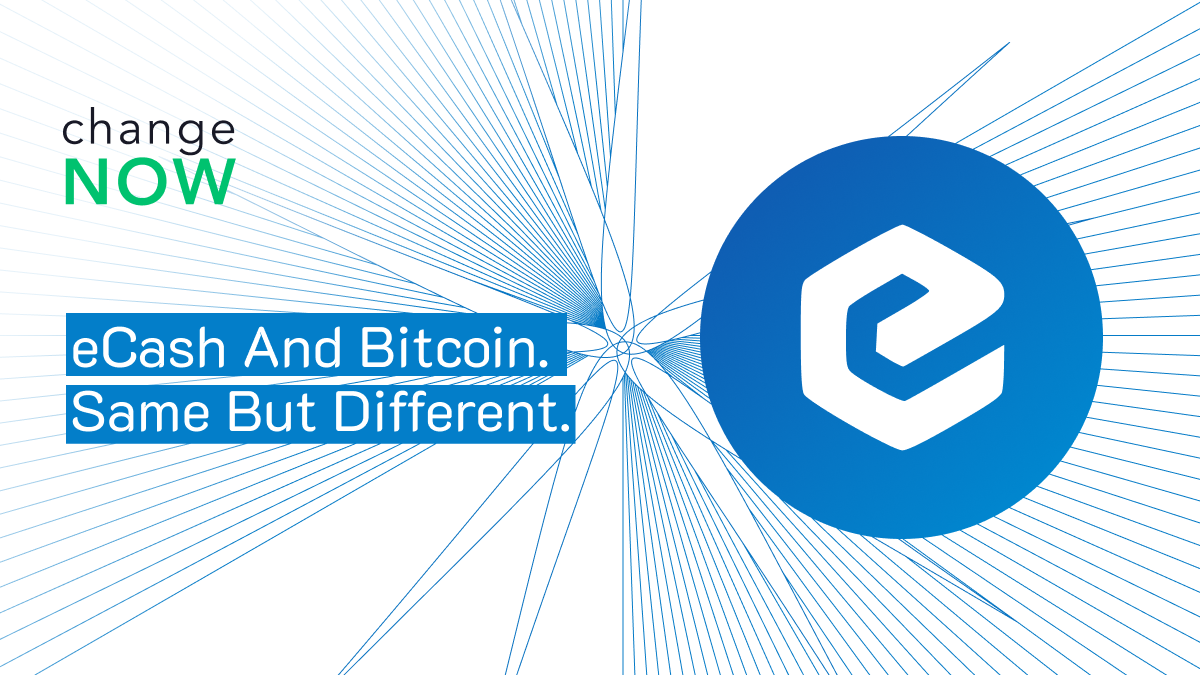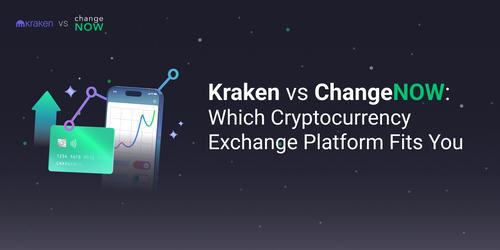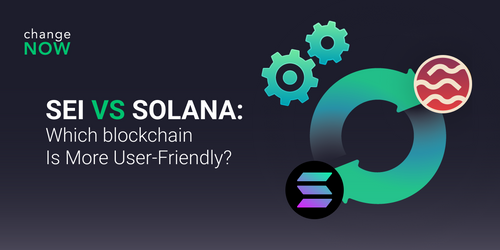eCash and Bitcoin. Same but Different

Bitcoin and eCash were both introduced as censorship-resistant electronic cash systems that don’t require trusted third parties for storing or transferring value — an innovative protocol enabling borderless and permissionless payments accessible to all. The technology behind bitcoin combines the efficiency of digital transactions with the attributes of commodity money. While BTC pivoted more towards security and decentralization, eCash’s value proposition is to strike a balance between censorship resistance and utility. To gain the most benefit out of the protocol, engineers behind eCash improve on the fundamentals of bitcoin technology to solve key limitations like scalability, usability, speed, and governance.
Key Takeaways
- Bitcoin vs. eCash – Both are censorship-resistant digital cash systems, but Bitcoin prioritizes security and decentralization, while eCash enhances scalability, usability, and governance with Avalanche integration.
- Technology & Innovation – eCash improves upon Bitcoin by offering faster transactions, lower fees, staking rewards, and optional protocol upgrades, making it more adaptable for real-world use.
- Governance & Funding – Unlike Bitcoin, eCash enables seamless, fork-free upgrades and a flexible funding model, avoiding governance deadlocks and off-chain bureaucracy.
- Utility & Adoption – eCash integrates smart contracts, privacy features, and tokenization, positioning itself as a scalable and programmable alternative to Bitcoin.
Differences and Similarities
The key innovation that sets eCash apart from Bitcoin and other altcoins is the integration of the Avalanche protocol (not to be confused with the AVAX blockchain) with its core Proof-of-Work consensus. This hybrid consensus protocol enhances speed, security, and functionality while preserving Bitcoin’s trustless design. Avalanche is also a breakthrough consensus technology, making eCash a cutting-edge Layer1 that carries forward Satoshi Nakamoto's invention optimized for real-world use.
And with eCash being a Bitcoin fork, there are not only differences but also many similarities between the two projects. For example, unlike most altcoins, eCash retains Bitcoin’s early transaction history, ensuring a fair distribution that avoids pre-mines or insider allocations. Both share the same SHA-256 Proof-of-Work mining algorithm and also have the same supply cap (2.1 quadrillion Satoshi). A minor difference with the supply is that eCash changed its denomination from coins to bits. The equivalent of 1 coin would be to hold 1 million bits, leaving eCash with a supply of 21 trillion bits, instead of 21 million coins. This cosmetic change is meant to improve handling payments, as it reduces eCash’s decimal places from eight to two just like a common currency. Meaning, you pay 99.99 XEC, instead of 0.0009999 XEC. Apart from these similarities, both projects also share some engineering strategies.
Strategy
While Bitcoin’s goal remains to be a widely adopted payment technology, its current technological limitations restrict it to representing a settlement layer rather than a payments network. This is due to the conservative engineering approach the project took, emphasizing keeping the protocol unchanged and sometimes even removing functionality to maximize decentralization for the sake of security. This means demand for higher capacity will need to be dispersed vertically onto second layers. Those second layers are less decentralized or may even be custodial, but that’s a trade-off BTC accepts to protect the censorship resistance and reliability of its base layer to the greatest possible extent.
This strategy also pleases investors by achieving predictability. Investors deem Bitcoin as a form of digital gold, safe from a sudden change of course or various network disruptions introduced through new features and technologies. Bitcoin’s focus on stability over iteration has merit at face value. But this comes with limitations that create a new set of problems in need of solving to achieve something useful and scalable.
While eCash is more pragmatic in its approach, security and censorship resistance remain crucial for the project. The eCash engineers also prefer to introduce new technology outside of the base layer. The Avalanche protocol integration for example is a major upgrade but also optional. Node operators can ignore Avalanche if they choose to and connect to the network looking only at its core PoW consensus. Similarly, eCash’s token protocol or Cashfusion privacy is also implemented independently of the base layer, keeping the network lean and allowing these features to be iterated on much faster. This approach also plays a key role in how eCash handles governance.
Governance and Funding
By removing limitations and focusing on its roadmap, eCash delivered features and innovations that the Bitcoin community is still debating on whether or not to implement. The increased flexibility of eCash also enables a more granular protocol governance, avoiding the common pitfalls of social consensus which may lead to deadlocks or unsatisfactory compromises between factions within a project.
Minimizing reliance on social institutions is a core pillar behind the invention of trustless blockchain technology. The eCash network expands on this principle by enabling fork-free upgrades via Avalanche. Nodes can upgrade and add changes as they please while staying in sync with the blockchain and once a majority of nodes adopt new rules, changes can take effect seamlessly. This smoother way of protocol governance on eCash is an innovation born out of necessity and only achieved through continuous technological advancement of the project.
This mechanism is also how eCash’s infrastructure funding works. While protocol funding isn’t new in the space, eCash’s approach is unique—it’s not hardcoded into consensus or controlled by a foundation or DAO. The recipient and amounts can be changed or even removed entirely if the network decides so. Leveraging Avalanche, all of it is coordinated outside of consensus via simple miner policy. Unlike BTC or other community-run altcoins that struggle with governance and funding, eCash enables an efficient way to enforce any needed rules or changes without causing network splits or off-chain bureaucracy. It’s a good example of how a less confined engineering approach ends up less contentious and less disruptive.
Features
Bitcoin introduced more performant second-layer solutions like the Lightning Network to enable faster and cheaper payments. However, adoption has been slow due to liquidity constraints, routing failures, and usability challenges. Other proposals exist, such as sidechains for additional functionality and scalability, but have not gained significant traction due to contention surrounding security trade-offs and lack of trustless interoperability. Despite these limitations, Bitcoin continues to serve as a widely recognized digital asset with strong brand recognition and institutional interest that likes the protocol just the way it is.
The eCash network offers lots of capacity, 1-block finality, guaranteed sub cent fees, eTokens, the decentralized Agora token exchange, and competitive 6.48% APY staking rewards for node operators. With its current feature set, eCash is a utility powerhouse with solid fundamentals, with the potential to create subnets for further functionality like a Zero-Knowledge subnet or an EVM subnet. Completing the last Avalanche milestone and enabling the permissionless creation of subnets makes eCash an unmatched bitcoin implementation with 51% attack protection, instant transaction finality, staking, tokens, covenants, smart contracts, bulletproof privacy, and cross-chain interoperability.
Conclusion
While Bitcoin shines with institutional adoption, brand recognition, predictability, lots of voluntary contributors, and a great network effect, eCash stands out with the integration of innovative technologies to solve often overlooked technical and social limitations of bitcoin technology and crypto as a whole, making it both a worthy next-generation blockchain and a respectable OG cryptocurrency with great utility.
Every approach has trade-offs. Yet, eCash’s engineering strategy proved itself well-balanced, making a serious case for a scalable and programmable digital cash that can serve billions of users around the globe. It retains a lot of compatibility with BTC, drawing from its permissionless nature and the same set of open-source contributions while innovating to solve problems at the forefront of crypto. In recent years even higher-ranked projects like DOGE or BCH benefited by forking its infrastructure for their respective networks, which is a clear signal of its industry-leading value on the technological front. Balanced with utility and a predictable scaling roadmap, eCash serves as a highly functional blockchain while also remaining an attractive investment asset.
Users can easily exchange their eCash on ChangeNOW. The process to exchange eCash is simple:
- Proceed to the "exchange" section on the website or in the app;
- In the “You Send” field choose eCash. In the “You Get” field choose the currency you want to exchange your eCash for.
- Proceed to the cashout, entering all the necessary details;
- Get the exchanged currency in your wallet.




